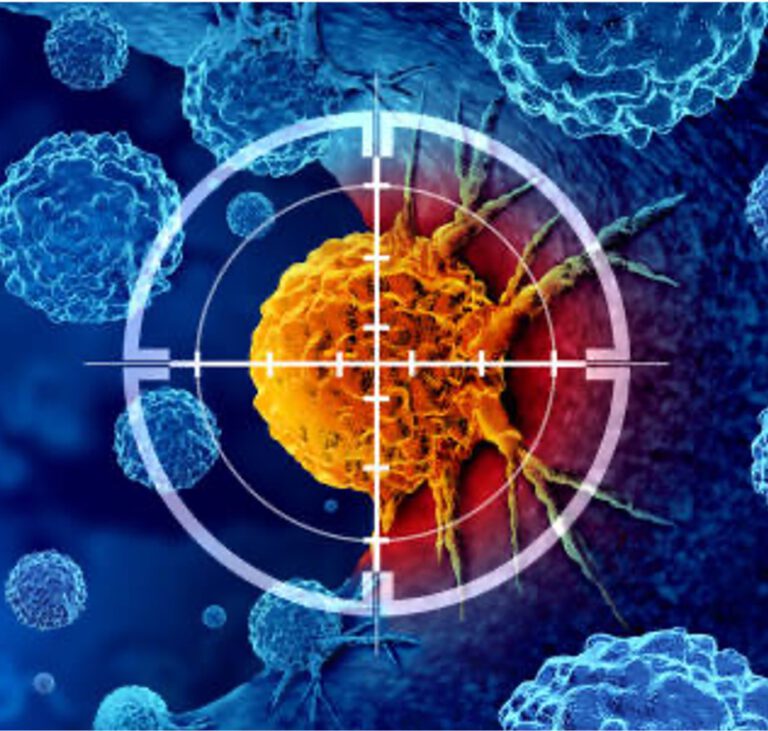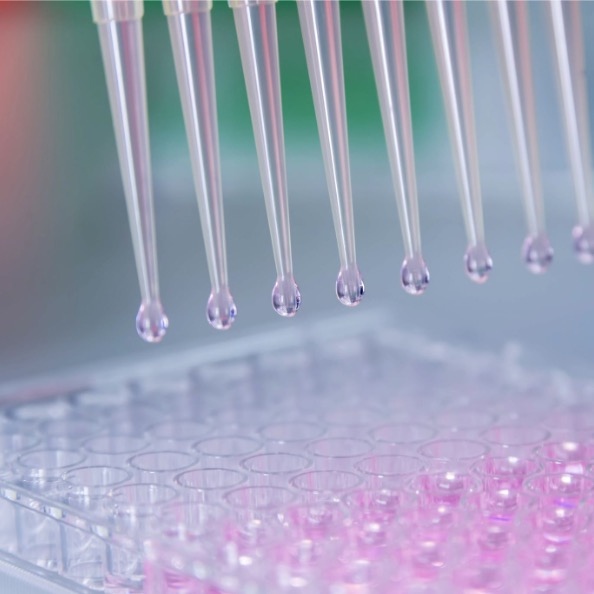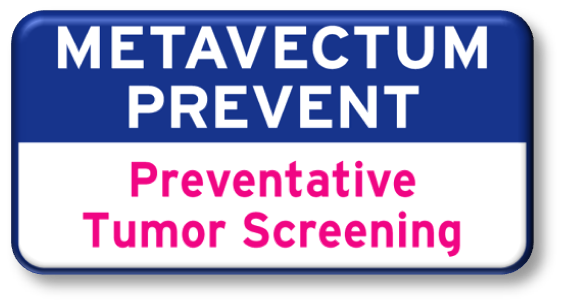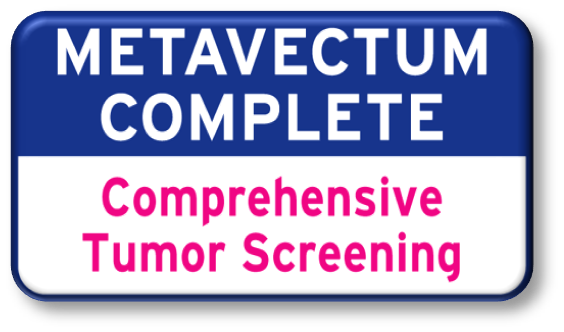Our Approach
what makes us different
Our lab focuses on isolating circulating tumor cells from patients' blood and unlocking their secrets. Here you can find out how we go about gaining groundbreaking insights into the inside of tumor cells.
1. isolation of tumor cells
Our work usually begins with the isolation of circulating tumor cells from the patient's blood. These cells are like tiny information capsules that provide us with valuable information about the activities and development of the tumor cells. Instead of blood, we can also isolate tumor cells from biopsies, urine, cerebrospinal fluid, ascites, etc.
2. determination of gene expressions
A crucial step in our process is determining the relevant gene expression in the isolated tumor cells. Here we identify the active genes that give us insights into the particularly active metabolic and signaling pathways of the tumor cells. The metabolism provides the energy and materials that the tumor cell needs to grow and divide. The signaling pathways play a decisive role in controlling cell activities and communication with the surrounding cells and tissues and contribute significantly to the development of tumors.
3. identification of therapy options
Based on the knowledge gained, we specifically identify substances that are able to block the metabolic and signaling pathways of tumour cells. This innovative approach makes it possible to develop precise interventions and intervene specifically in the course of the disease.
4. personalized therapy approaches
Our test results enable your medical team to select and apply therapeutic approaches specifically identified for your tumor. By specifically blocking metabolic and signaling pathways, we offer individualized treatment options that are tailored to the unique characteristics of each tumor. At iQMedix, we use state-of-the-art molecular biology technologies to advance cancer treatment. Our mission is to apply innovative solutions to improve the quality of life of our patients and successfully lead the fight against cancer.
1. isolation of tumor cells
Our work usually begins with the isolation of circulating tumor cells from the patient's blood. These cells are like tiny information capsules that provide us with valuable information about the activities and development of the tumor cells. Instead of blood, we can also isolate tumor cells from biopsies, urine, cerebrospinal fluid, ascites, etc.
2. determination of gene expressions
A crucial step in our process is determining the relevant gene expression in the isolated tumor cells. Here we identify the active genes that give us insights into the particularly active metabolic and signaling pathways of the tumor cells. The metabolism provides the energy and materials that the tumor cell needs to grow and divide. The signaling pathways play a decisive role in controlling cell activities and communication with the surrounding cells and tissues and contribute significantly to the development of tumors.
3. identification of therapy options
Based on the knowledge gained, we specifically identify substances that are able to block the metabolic and signaling pathways of tumour cells. This innovative approach makes it possible to develop precise interventions and intervene specifically in the course of the disease.
4. personalized therapy approaches
Our test results enable your medical team to select and apply therapeutic approaches specifically identified for your tumor. By specifically blocking metabolic and signaling pathways, we offer individualized treatment options that are tailored to the unique characteristics of each tumor. At iQMedix, we use state-of-the-art molecular biology technologies to advance cancer treatment. Our mission is to apply innovative solutions to improve the quality of life of our patients and successfully lead the fight against cancer.
Our offer

Metavectum Prevent
Preventive early tumor detection
Prevention at stage 0: "Do I have cancer?"
Monitoring in later stages: "Has my cancer come back?"
Metavectum Select
Natural substances and off-label drugs
in stage 1 - 2
"Which complementary substances fight my cancer most effectively?"
Metavectum Complete
Comprehensive diagnostics
in stage 3 - 4
"Which therapy is best for me?"
Guidelines vs. personalized therapy
Customized
Therapy
Dimension
tailored
Therapy
Guidelines mean that all patients with stomach cancer, for example, are treated according to the same guidelines. To put it simply, this could be described as the "watering can principle". However, if you take a closer look at gastric cancer patients using the molecular biology and biochemistry methods available today, you can see that none of these tumors is identical to another tumor in this group is. This inevitably leads to the demand for individual personalized therapy. This means that modern molecular biology methods are used to identify the metabolic pathways used by individual tumors and find target structures that can be blocked with approved drugs. So you are looking for the Achilles heel of the tumor. As part of an individualized therapy, certain target structures are then attacked and blocked. Target structures are, for example, nodes in the tumor's message system, also known as receptors, which receive a message and then pass it on, similar to a telephone system. These receptors are individually made up of very complex proteins that are blocked by a suitable drug.
One might think that simply identifying the receptors used by tumors and blocking them with drugs could solve the tumor problem. Unfortunately, this is not the case. Tumors have a life of their own comparable to individualswhich are building up a network of communication, energy procurement, sensor technology and production.
They thus react to influences within the body but also to influences from outside. Classic tumor drugs such as platinum compounds, for example, immediately provoke protective mechanisms in the surviving tumor cells, including Resistances called. This includes, for example, the ejection of drugs by coupling them to transport proteins (ABC transporters, ligases, etc.) and thus removing them from the tumor cell. Or the tumor cell uses Response to therapy parallel metabolic pathwaysagainst which the medication used does not help. This is comparable to the situation on a city street: if the main road is blocked by an obstacle, traffic is diverted via a side road


Early recognition and action
Circulating tumor cells
Even very small tumors in the body release tumor cells into the blood. The smallest primary tumor that released CTCs (Circulating Tumor Cells) was measured at 0.094 mm x 0.094 mm, its volume was calculated at 0.0004 mm3 and its productivity was estimated at 1 CTC per 30 minutes. This indicates that CTCs are released into the blood and/or lymphatic system at a very early stage and can provide information about tumor metabolism and treatment options.
This "early tumor" cannot be detected with current imaging techniques. The CTC contain tumor DNA as well as tumor mRNA and all proteins and metabolic products produced by the tumor.
The isolation of CTC is not trivial. One milliliter (1 ml) of blood contains millions of blood cells (red and white blood cells, immune cells, etc.), among which there are one to five circulating tumor cells. The analysis of these CTCs currently offers the best opportunity to obtain comprehensive information about the tumor and metastases, which can then be used for targeted therapeutic purposes.
Tumor cells differ from healthy cells in their slightly different genetic activity and make-up. This is also noticeable in slightly altered structures on the outer surface of the tumor cells. So-called antibodies are able to recognize these structures and can thus distinguish between healthy and tumour cells.
A look inside the tumor cells
The isolation of circulating tumor cells
The further procedure is tricky: antibodies are coupled to tiny magnetic particles (micrometer-sized, µm) and these "magnetic beads" are added to the blood sample. The antibodies now fish for tumor cells, bind to them and can be extracted from the sample after 20 - 30 minutes using a larger magnet.
To ensure that these are indeed epithelial tumor cells and not scattered healthy epithelial cells that have been shed from body organs, around 10 marker genes that are typical for tumors are quantified. The entirety of the relevant genetic information of the circulating tumor cells (CTC) is then quantified in the transcriptome using RT-PCR, checked in the proteome and incorporated into a therapy proposal.
The number of CTCs can also be influenced by chemotherapeutic agents. The biomolecular properties (gene expression and mutation) of the primary tumor and CTC are approx. 90 - 95 % similar.
A biopsy of the primary tumor provides information about the current state of the tumor. The gene expression and mutation analysis of the CTC links the situation in the primary tumor with the future development up to the formation of metastases and their genetic and phenotypic reorientation in order to successfully establish colonies that do not fall victim to the immune system along the way.




